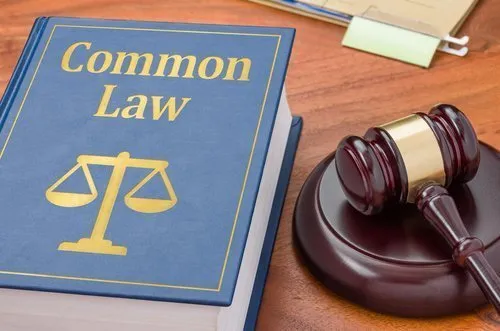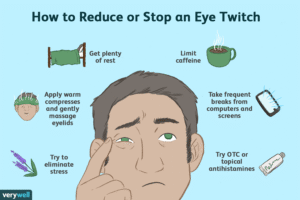Child Protective Services (CPS) plays a crucial role in ensuring the safety and well-being of children across Texas. However, there are often misconceptions and misunderstandings about what CPS can and cannot do. In this article, we will explore the powers and limitations of CPS in Texas in 2022, with a focus on understanding the processes involved in cases related to lingerie set bra and panties. Let’s delve into the details to gain a better understanding of CPS and its role in protecting children.
Understanding CPS (Child Protective Services)
CPS is a government agency tasked with safeguarding children and investigating reports of suspected abuse or neglect. Their primary goal is to ensure the well-being of children by providing a safe and nurturing environment. To accomplish this, CPS has certain powers and limitations that shape their interventions and decision-making processes. Purpose and Role of CPS
CPS exists to protect children from abuse, neglect, or any form of harm that may jeopardize their physical or emotional well-being. They aim to intervene in situations where a child’s safety is at risk and work towards resolving the issues that led to the concerns. CPS investigates allegations, assesses risks, and takes necessary actions to safeguard the child’s welfare.
CPS Investigations

When a report of suspected abuse or neglect is made, CPS initiates an investigation. Trained caseworkers visit the child’s home, interview family members, and assess the overall living conditions. These investigations are conducted with sensitivity and the utmost consideration for the privacy and dignity of the individuals involved.
CPS Powers and Limitations in Texas 2022
Understanding the powers and limitations of CPS is essential for parents and families involved in investigations. Let’s explore some key aspects of CPS interventions in Texas in 2022.
Removing a Child from the Home
CPS has the authority to remove a child from their home if there is an immediate threat to their safety. This action is taken only when all other options have been exhausted or when the risk is deemed too severe. Removals are typically temporary and aim to protect the child while working towards resolving the issues that led to the intervention.
Temporary Protective Orders
In situations where the immediate safety of the child cannot be guaranteed within the home environment, CPS may seek a temporary protective order through the court. This order restricts the alleged abuser’s access to the child and ensures their well-being during the investigation.
Court Involvement
CPS can seek court involvement to address more complex cases or situations that require legal decisions. The court may grant temporary conservatorship to CPS, allowing them to make important decisions regarding the child’s welfare. Additionally, the court can mandate certain services or interventions that the parents must comply with for reunification.
Reunification and Termination of Parental Rights
CPS prioritizes family preservation and works towards reunification whenever possible. However, if the safety concerns persist, CPS may initiate proceedings to terminate parental rights. This is a serious step taken only when it is determined to be in the best interest of the child’s safety and well-being.
Rights of Parents and Families
Parents and families involved in CPS investigations have certain rights that must be respected throughout the process. Let’s discuss a few key rights they possess.
Due Process
Parents have the right to due process, which includes being informed of the allegations against them, participating in court hearings, presenting evidence, and having legal representation. This ensures fairness and accountability in the decision-making process.
Right to Legal Representation
Parents have the right to seek legal representation during CPS investigations and court proceedings. Legal counsel can provide guidance, protect their rights, and advocate for the best interests of the family.
Confidentiality
CPS investigations are typically confidential to protect the privacy of the individuals involved. However, there are instances where information may be shared with relevant parties, such as medical professionals or educators, when necessary for the child’s safety.
Reporting Suspected Abuse or Neglect
As responsible members of society, it is crucial to report suspected abuse or neglect to CPS. Anyone who believes a child is in danger or has evidence of maltreatment should make a report. Reporting ensures that CPS can take appropriate action and protect vulnerable children.
Working with CPS
If you find yourself involved with CPS, it is essential to approach the situation with cooperation and open communication. Here are a couple of key aspects to keep in mind when working with CPS.
Cooperation and Communication
Cooperating with CPS during their investigation is crucial. Answer their questions truthfully, provide necessary information, and actively participate in developing a safety plan to address any concerns. Open communication fosters a collaborative approach and helps achieve the best possible outcome for the child.
Developing a Safety Plan
If CPS identifies potential risks or concerns, they may require the family to develop a safety plan. This plan outlines the steps the family will take to address the identified issues and create a safe environment for the child.
Common Misconceptions about CP
There are several misconceptions surrounding CPS, which can create unnecessary fear and anxiety. Let’s debunk a couple of common misconceptions.
CPS as a Weapon
Contrary to popular belief, CPS is not a tool for personal vendettas or revenge. It operates based on well-defined protocols and guidelines to protect children from genuine harm.
CPS Intervening in Everyday Parenting
CPS does not interfere with routine parenting decisions as long as they do not endanger the child’s safety or well-being. Their focus is on addressing instances of abuse, neglect, or serious harm.
Conclusion
Child Protective Services in Texas plays a vital role in ensuring the safety and well-being of children. Understanding the powers and limitations of CPS is crucial for parents and families involved in investigations. By debunking common misconceptions and promoting cooperation, CPS can better fulfill its purpose of protecting children from abuse and neglect. Remember, reporting suspected abuse or neglect is a responsibility we all share to create a safe environment for our children.
FAQs
Can CPS remove a child without evidence?
No, CPS cannot remove a child without evidence or reasonable belief that the child is in immediate danger or at risk of harm. They must follow specific guidelines and obtain court approval for removal when necessary.
What happens if CPS finds evidence of abuse or neglect?
If CPS finds evidence of abuse or neglect during their investigation, they will take appropriate actions to protect the child, which may include removing the child from the home temporarily, providing necessary services, or involving the court system.
Can I refuse to let CPS into my home?
While you have the right to refuse entry to CPS without a warrant, it is generally advisable to cooperate and address any concerns they may have. Refusing entry may raise suspicions and could potentially escalate the situation.
How long does a CPS investigation take?
The duration of a CPS investigation varies depending on the complexity and urgency of the case. It can take several weeks to months to complete an investigation, considering the thoroughness required to ensure the child’s safety.
Can I get my child back after CPS removes them?
If CPS removes a child from the home, the


